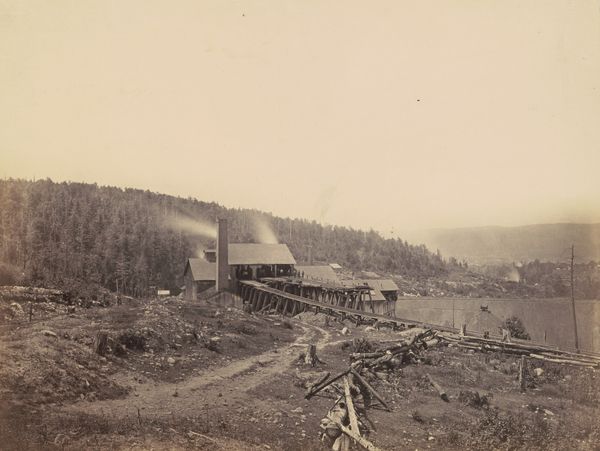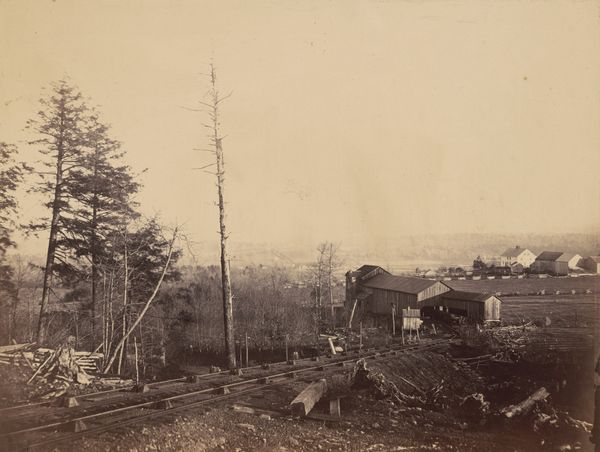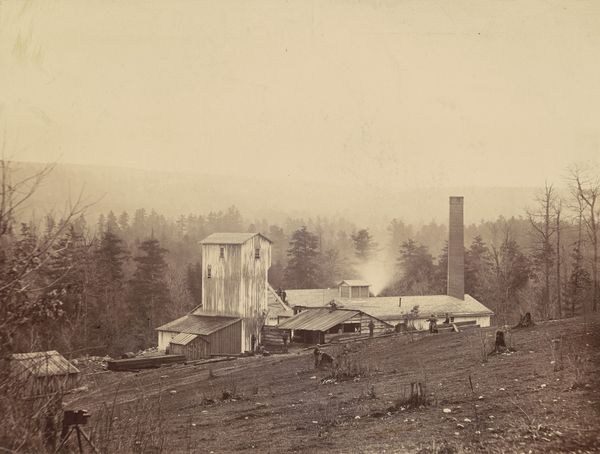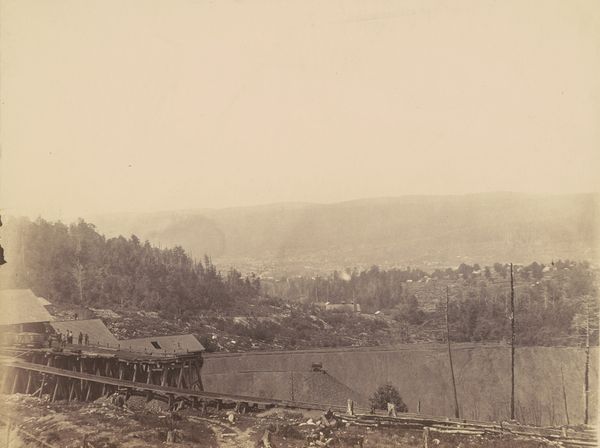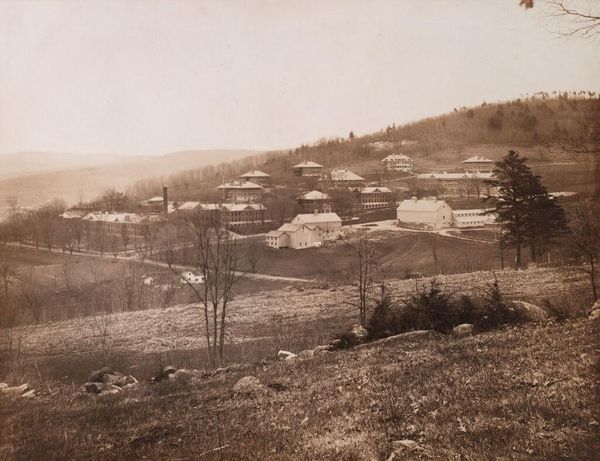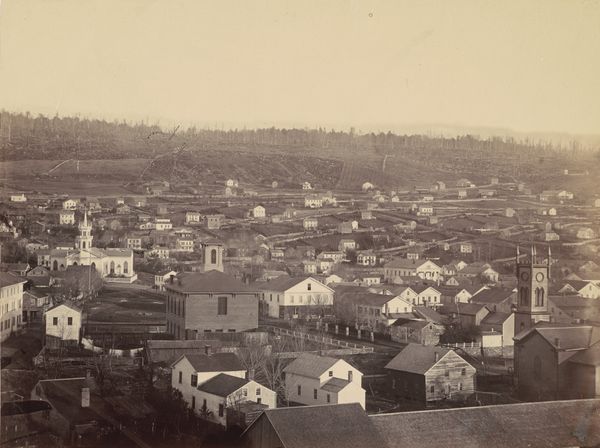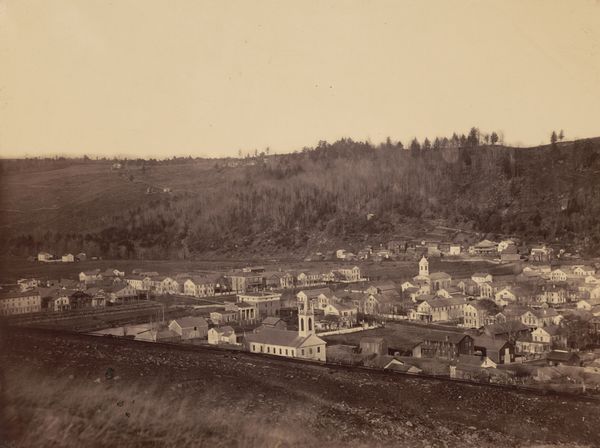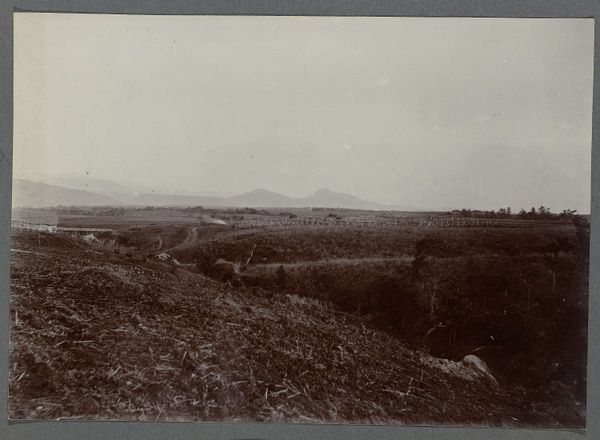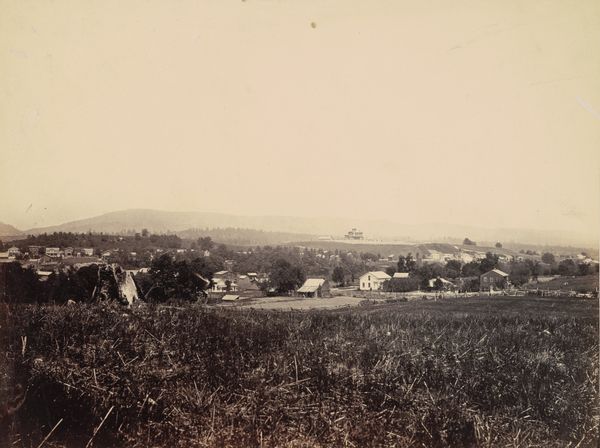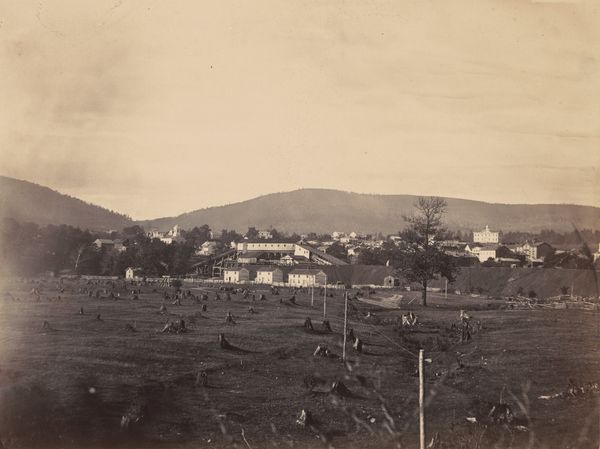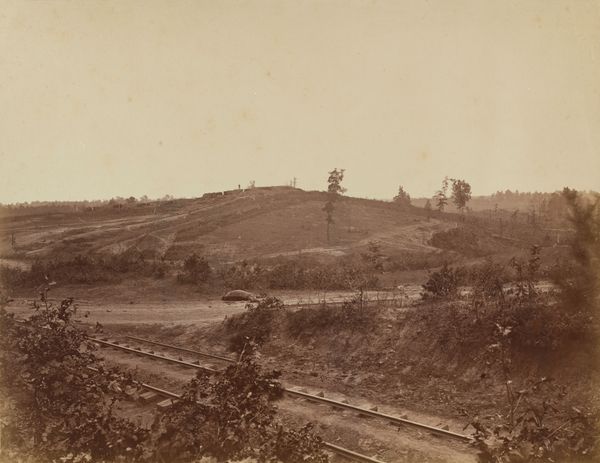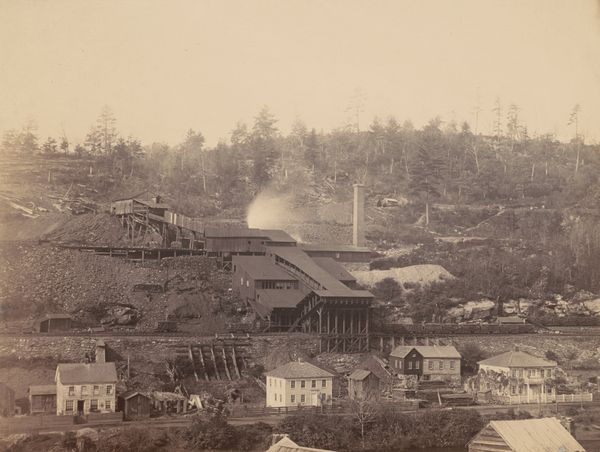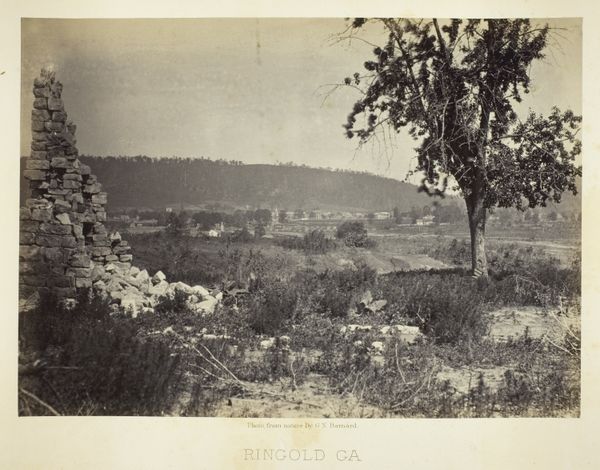
Pecks Crossing and Plane, E., Del. & Hudson Canal Co. c. 1863 - 1865
0:00
0:00
photography
#
landscape
#
photography
#
hudson-river-school
#
realism
Dimensions: image/sheet: 30.7 × 41.1 cm (12 1/16 × 16 3/16 in.) mount: 44.3 × 53.1 cm (17 7/16 × 20 7/8 in.)
Copyright: National Gallery of Art: CC0 1.0
Curator: Thomas H. Johnson's "Pecks Crossing and Plane, E., Del. & Hudson Canal Co.", dating from around 1863 to 1865, offers a compelling tableau of American infrastructure and landscape. Editor: It's certainly…unprepossessing at first glance. The light is flat, the tones are almost uniformly gray-brown. Not exactly radiating a dynamic or even pleasant emotion. Curator: But the restrained palette actually directs focus to the composition, I think. Notice the careful arrangement of forms—the diagonal of the canal incline playing against the horizontality of the townscape, for instance. And note that very Hudson River School treatment of nature. It’s a rather formal construction! Editor: True. Looking closely, one sees the scene's integration of natural landscape and technological progress, typical of the mid-19th century, in its representation of the Delaware and Hudson Canal. It highlights an important aspect of American expansion and the role canals played in connecting different regions economically. Curator: Precisely! The materiality here is significant too. As a photograph, it provides an ostensibly objective record, yet Johnson carefully selected the viewpoint. Editor: And what an unusual angle— elevated, looking down. This suggests power over, but also potentially a concern about the impact on that very nature. It reflects both the promise and the anxieties surrounding industrial advancement during this transformative period. The photographic process, by its indexical nature, becomes enmeshed in a social statement about American ambitions. Curator: The very act of documentation lends value. Editor: So we end up appreciating not so much some sublime vision as a studied arrangement with significant social and historical undercurrents. Curator: Yes, by attending closely to both formal relations and historical contexts, we’re invited to reassess conventional aesthetics. Editor: Indeed. It encourages us to explore further this interplay between medium, composition, and cultural moment, beyond immediate aesthetics.
Comments
No comments
Be the first to comment and join the conversation on the ultimate creative platform.
